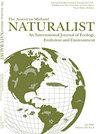草原小鸡(Tympanuchus Pallidicinctus)繁殖季节空间利用在不同生态区域和繁殖阶段存在差异
IF 0.6
4区 环境科学与生态学
Q4 Agricultural and Biological Sciences
引用次数: 0
摘要
摘要自欧洲人定居以来,美国周边草原生态系统的大规模衰退导致了小型草原鸡(Tympauchus pallidicinctus)栖息地的大量丧失和破碎化,并使其栖息范围和种群数量减少了85%。繁殖季节空间利用是小草原鸡保护的重要组成部分,因为它可能影响当地的承载能力和种群动态。先前对繁殖季节空间使用的估计在很大程度上仅限于目前占用的四个生态区中的一个,但繁殖空间使用的潜在外部驱动因素,如景观破碎化、植被结构和组成以及人为结构的密度,可能会显示出很大的空间变化。此外,繁殖季节的不同阶段,栖息地需求差异很大,但雌性小草原鸡在这些阶段的空间使用情况仍相对不清楚。我们在美国堪萨斯州和科罗拉多州的四个研究地点,代表了四个目前被占用的生态区中的三个,测试了雌性小草原鸡的家域面积和每日位移(每天第一个和最后一个位置之间的净距离)是否因生态区和繁殖阶段而异。我们为女性配备了甚高频(VHF)或全球定位系统(GPS)发射机,并分别用核密度估计器或有偏随机桥接模型估计了家庭范围。在所有生态区中,配备VHF的鸟类繁殖季节的栖息地面积平均为190.4公顷(±19.1公顷),配备GPS发射器的鸟类繁殖季的栖息地面积为283.6公顷(±23.1公顷),而日位移平均为374.8米(±14.3米)。与杂草草原生态区相比,短草草原/保护区项目Mosaic和Sand Sagebrush草原生态区的平均栖息地面积和带GPS发射器的鸟类日位移更大。在放养/预产期间,家域面积和日位移最大,在育婴阶段最小,此时雌性的活动受到小鸡活动的限制。对小型草原鸡空间使用的生态区域和繁殖阶段特定估计将有助于管理者确定特定繁殖阶段栖息地在景观上的空间配置。此外,在估计较小草原鸡种群持续生存所需的繁殖栖息地数量时,生态区和繁殖阶段的具体估计至关重要。本文章由计算机程序翻译,如有差异,请以英文原文为准。
Breeding Season Space Use by Lesser Prairie-Chickens (Tympanuchus Pallidicinctus) Varies Among Ecoregions and Breeding Stages
Abstract. Large-scale declines of grassland ecosystems in the conterminous United States since European settlement have led to substantial loss and fragmentation of lesser prairie-chicken (Tympanuchus pallidicinctus) habitat and decreased their occupied range and population numbers by ∼85%. Breeding season space use is an important component of lesser prairie-chicken conservation, because it could affect both local carrying capacity and population dynamics. Previous estimates of breeding season space use are largely limited to one of the four currently occupied ecoregions, but potential extrinsic drivers of breeding space use, such as landscape fragmentation, vegetation structure and composition, and density of anthropogenic structures, can show large spatial variation. Moreover, habitat needs vary greatly among the lekking/prelaying, nesting, brood-rearing, and postbreeding stages of the breeding season, but space use by female lesser prairie-chickens during these stages remain relatively unclear. We tested whether home range area and daily displacement (the net distance between the first and last location of each day) of female lesser prairie-chickens varied among ecoregions and breeding stages at four study sites in Kansas and Colorado, U.S.A., representing three of the four currently occupied ecoregions. We equipped females with very-high-frequency (VHF) or Global Positioning System (GPS) transmitters, and estimated home range area with kernel density estimators or biased random bridge models, respectively. Across all ecoregions, breeding season home range area averaged 190.4 ha (±19.1 ha se) for birds with VHF and 283.6 ha (±23.1 ha) for birds with GPS transmitters, whereas daily displacement averaged 374.8 m (±14.3 m). Average home range area and daily displacement of bird with GPS transmitters were greater in the Short-Grass Prairie/ Conservation Reserve Program Mosaic and Sand Sagebrush Prairie Ecoregions compared to sites in the Mixed-Grass Prairie Ecoregion. Home range area and daily displacement were greatest during lekking/prelaying and smallest during the brood-rearing stage, when female movements were restricted by mobility of chicks. Ecoregion- and breeding stage-specific estimates of space use by lesser prairie-chickens will help managers determine the spatial configuration of breeding stage-specific habitat on the landscape. Furthermore, ecoregion- and breeding stage-specific estimates are crucial when estimating the amount of breeding habitat needed for lesser prairie-chicken populations to persist.
求助全文
通过发布文献求助,成功后即可免费获取论文全文。
去求助
来源期刊

American Midland Naturalist
环境科学-生态学
CiteScore
1.20
自引率
0.00%
发文量
38
审稿时长
18-36 weeks
期刊介绍:
The American Midland Naturalist has been published for 90 years by the University of Notre Dame. The connotations of Midland and Naturalist have broadened and its geographic coverage now includes North America with occasional articles from other continents. The old image of naturalist has changed and the journal publishes what Charles Elton aptly termed "scientific natural history" including field and experimental biology. Its significance and breadth of coverage are evident in that the American Midland Naturalist is among the most frequently cited journals in publications on ecology, mammalogy, herpetology, ornithology, ichthyology, parasitology, aquatic and invertebrate biology and other biological disciplines.
 求助内容:
求助内容: 应助结果提醒方式:
应助结果提醒方式:


